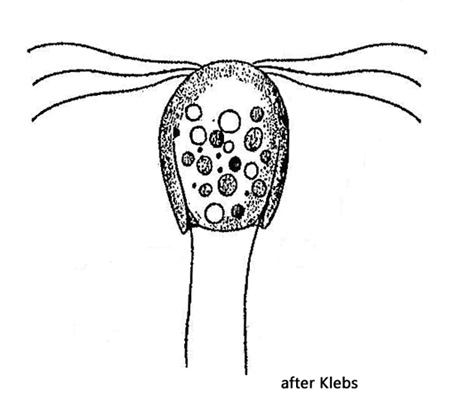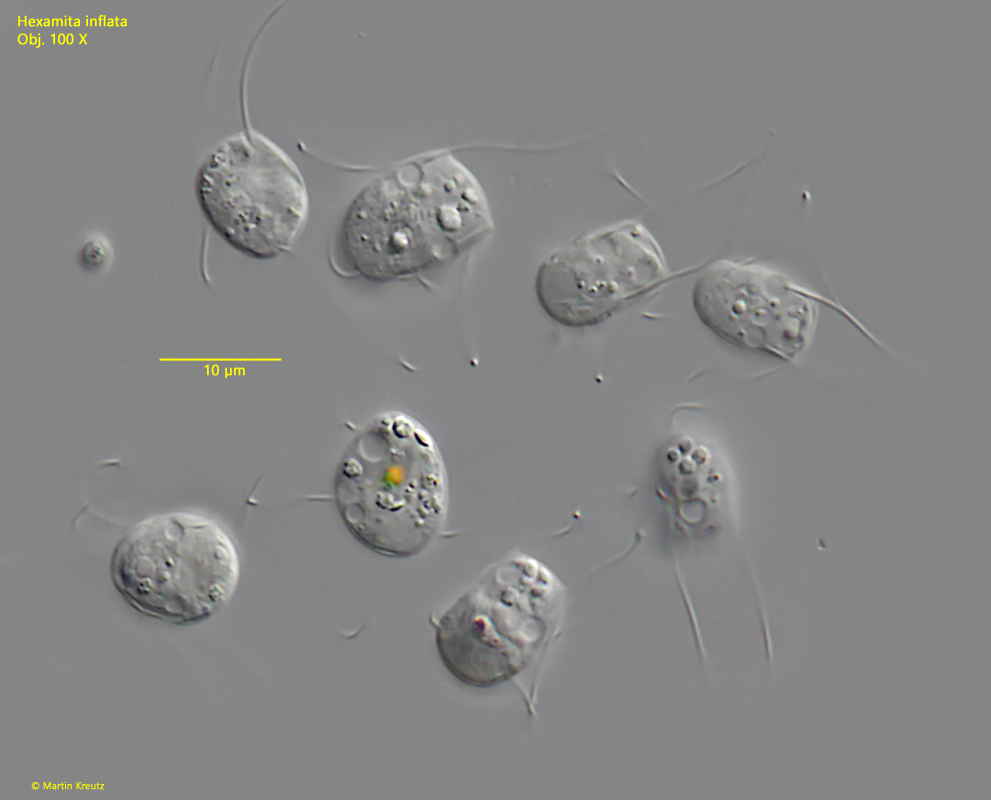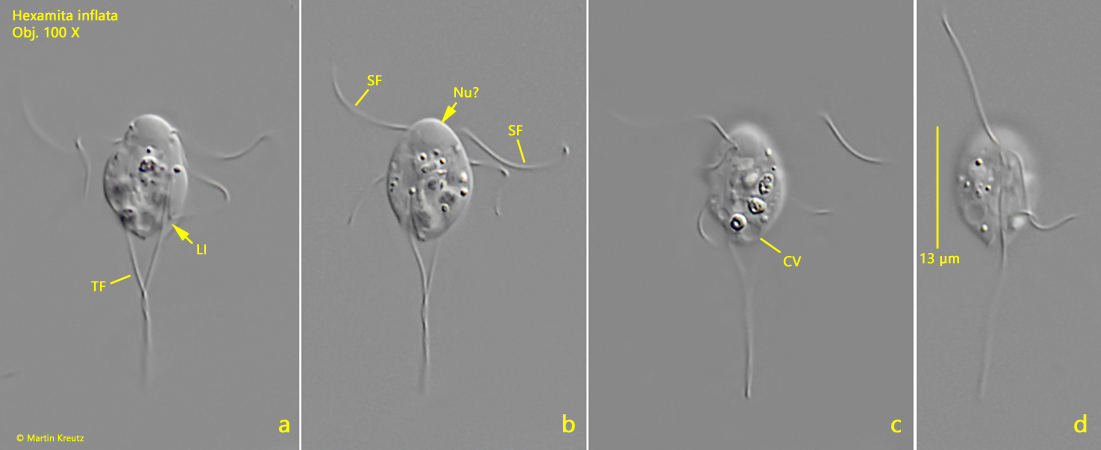Hexamita inflata (Dujardin, 1841)
Most likely ID: n.a.
Synonym: Bodo inflatus
Sampling location: Simmelried
Phylogenetic tree: Hexamita inflata
Diagnosis:
- body truncated spheroid, rounded anteriorly, posterior truncated
- dorso-ventrally flattened
- length 13–25 µm
- two nuclei anteriorly (hard to see)
- two lateral bundles of each 3 swimming flagella at anterior end
- two lateral invaginations (oral apparatuses) with each one trailing flagellum directed posteriorly
- one or two contractile vacuoles equatorial or posteriorly

Hexamita inflata is an anaerobic zooflagellate that I often find in the Simmelried. It occurs mainly between anaerobically decomposing plant masses and between accumulations of rhodobacteria.
Hexamita inflata is not easy to observe in fresh samples due to its small size. However, it often settles on floating coverslips, especially in the center of the coverslip where little oxygen reaches. Nevertheless, live observation is difficult at high magnifications, as the cells quickly deform and swell at low layer thickness.
Locomotion takes place with the 6 swimming flagella (2 bundles with 3 flagella each) at the anterior end. The two long flagella, which arise from the lateral invaginations, are only trailed. These trailing flagella are often twisted into each other. The two invaginations are the cytostomes, which are open towards the posterior end. There are two cell nuclei in the front end, which are difficult to recognize. As far as I could see, the food consists of individually phagocytized bacteria and rhodobacteria. In my population, the specimens were all between 10-13 µm long. I did not find any larger specimens.

Fig. 1: Hexamita inflata. L = 10-13 µm. An accumulation of specimens on the floating coverslip. Obj. 40 X.

Fig. 2 a-d: Hexamita inflata. L = 13 µm. A slightly squashed specimen and therefore rounded posteriorly. Note the lateral invaginations (LI), which are the oral apparatuses. The two long trailing flagella (TF) emerge from invaginations. CV = contractile vacuole, SF = swim flagella. Obj. 100 X.